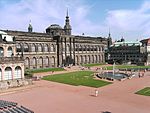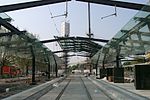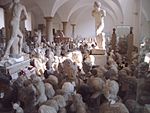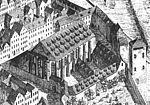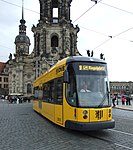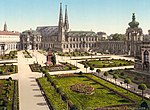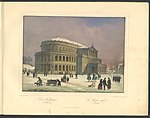Mathematisch-Physikalischer Salon
1556 establishments in the Holy Roman Empire1724 establishments in the Holy Roman EmpireHorological museums in GermanyLibraries established in 1556Museums established in 1724 ... and 1 more
Staatliche Kunstsammlungen Dresden
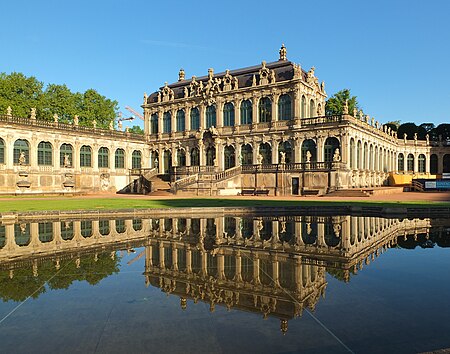
The Mathematisch-Physikalischer Salon (German: [mateˈmaːtɪʃ fyziˈkaːlɪʃɐ zaˈloːn], Royal Cabinet of Mathematical and Physical Instruments) in Dresden, Germany, is a museum of historic clocks and scientific instruments. Its holdings include terrestrial and celestial globes, astronomical, optical and geodetic devices dating back to the 16th century, as well as historic instruments for calculating and drawing length, mass, temperature and air pressure. The Mathematisch-Physikalischer Salon is part of the Staatliche Kunstsammlungen Dresden (State Art Collections). It is located in the Zwinger.
Excerpt from the Wikipedia article Mathematisch-Physikalischer Salon (License: CC BY-SA 3.0, Authors, Images).Mathematisch-Physikalischer Salon
Theaterplatz, Dresden Innere Altstadt (Altstadt)
Geographical coordinates (GPS) Address Nearby Places Show on map
Geographical coordinates (GPS)
| Latitude | Longitude |
|---|---|
| N 51.0532 ° | E 13.7328 ° |
Address
Zwinger
Theaterplatz
01067 Dresden, Innere Altstadt (Altstadt)
Saxony, Germany
Open on Google Maps
